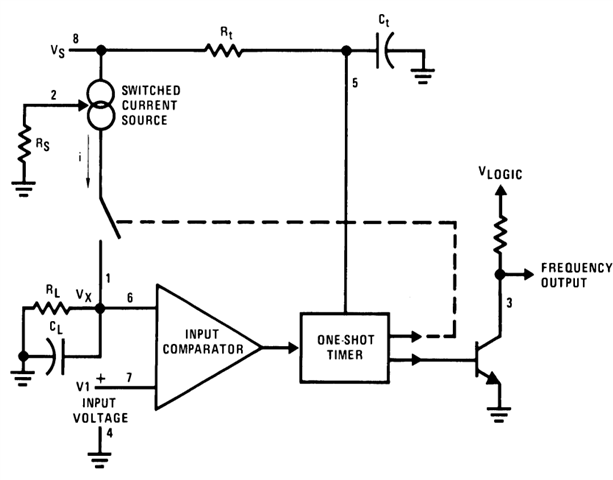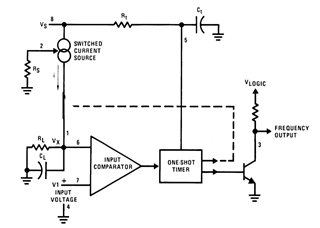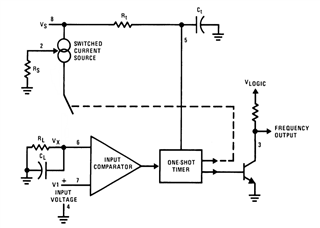Tool/software:
Hello! I am currently doing a project with a group, which uses the LM331 to make a frequency output that varies by voltage. In the data sheet for LM331, the reason why the voltage is proportional to the frequency is described as follows:
" The current flowing into CL is exactly IAVE = i × (1.1×RtCt ) × f, and the current flowing out of CL is exactly Vx /RL ≃ VIN/RL . If VIN is doubled, the frequency will double to maintain this balance."
The current flowing into CL is exactly IAVE = i × (1.1×RtCt ) × f, and the current flowing out of CL is exactly Vx /RL ≃ VIN/RL . If VIN is doubled, the frequency will double to maintain this balance."
First, i dont understand how they assume all of the current i, will be flowing into the capacitor CL. Second i dont understand how these two equations can be set equal. I dont see why the discharging current cant be different from the charging current i. Is this because it is very simplified, or is there something I misunderstand?



